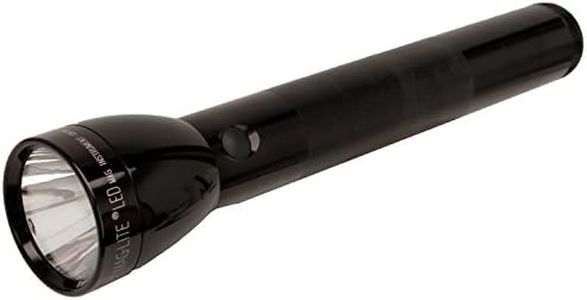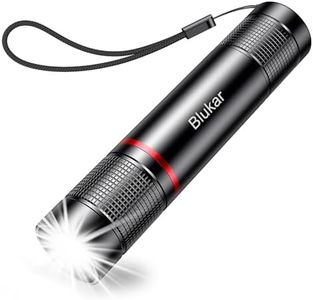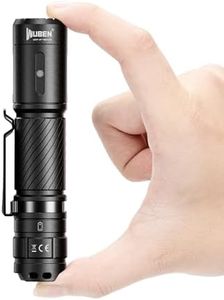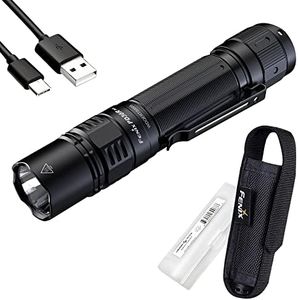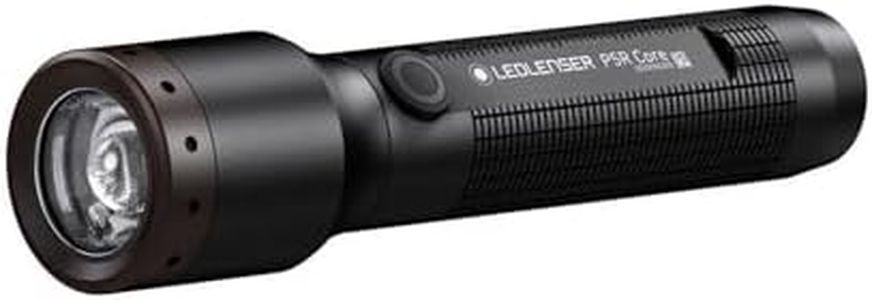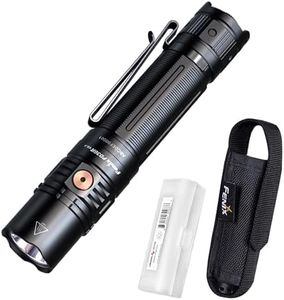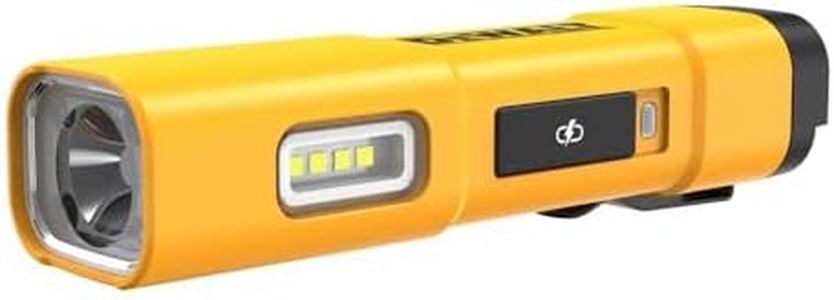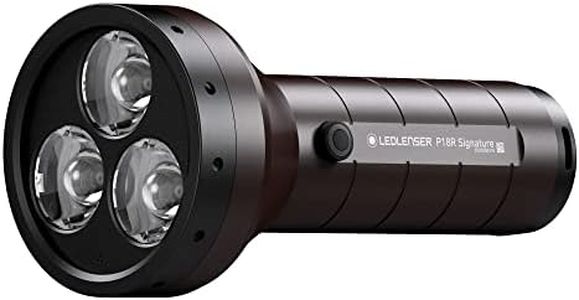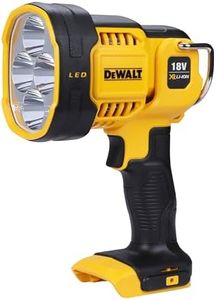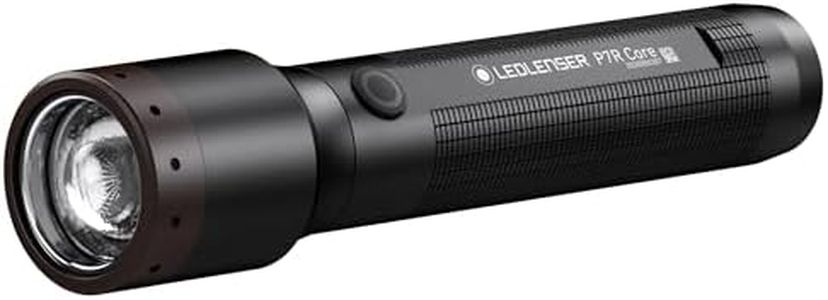We Use CookiesWe use cookies to enhance the security, performance,
functionality and for analytical and promotional activities. By continuing to browse this site you
are agreeing to our privacy policy
10 Best Mechanic Flashlights
From leading brands and best sellers available on the web.Buying Guide for the Best Mechanic Flashlights
When choosing a mechanic's flashlight, it's important to focus on features that make your work easier and safer in often cramped or dark environments. The right flashlight will help you see clearly in tight engine compartments and spot small problems that you might otherwise miss. Think about how and where you'll use the flashlight most; this will help you prioritize which key features are most important for you.Brightness (Lumens)Brightness, measured in lumens, tells you how much light the flashlight produces. This is crucial for mechanics who need to see into dark or shadowy spaces under cars or inside engines. Low lumens (100-300) are suitable for close-up tasks or when you need softer light, but you might have trouble spotting small details. Medium lumens (300-600) are a good all-round choice for most mechanical work, providing a brighter beam that helps with both close and moderately distant tasks. High lumens (600+) give you a very powerful light, ideal for illuminating large or very dark areas, but can create more glare in tight spaces. When picking the right brightness, consider your typical workspace and whether you need adjustable brightness levels.
Beam Type and AngleThe beam type and its angle determine how the light is spread out—some flashlights produce a focused, narrow beam, while others offer a wide flood of light. A narrow beam can reach deep into small areas but might not light up much of your work surface at once. A wide beam covers a larger area and is often better for engine bays or undercarriage work. Mechanic tasks usually benefit from a flashlight with both a focused spot for precision and a floodlight option for area lighting, so consider models that allow switching between modes.
Size and ShapeFlashlights for mechanics come in various sizes and shapes, such as penlights, pivoting heads, or compact body styles. Compact and slim designs are best for getting into tight locations, while larger ones may offer more brightness or longer battery life but can be unwieldy in cramped quarters. If your work often involves reaching into small spaces or you want something lightweight, go for a slimmer flashlight or a penlight style. For general shop use where space isn't an issue, a sturdier, chunkier flashlight might be best.
Durability and Build QualitySince mechanic work can be tough on tools, durability matters. A durable flashlight built from materials like anodized aluminum or tough plastics can withstand drops, grease, and occasional exposure to fluids. Look for features like rubberized grips and reinforced lenses if your flashlight is likely to take some knocks. If you work in wet environments or worry about spills, choose a model that's water-resistant or waterproof.
Battery Type and RuntimeFlashlights are powered by disposable batteries (like AA or AAA) or rechargeables (built-in lithium-ion). Disposable batteries can be swapped out quickly when you run out, but you need to keep spares handy. Rechargeable flashlights save money on batteries and can be topped off via USB, but may take a while to recharge and need pre-planning to keep them charged. Runtime tells you how long the flashlight will stay on before needing new batteries or a recharge—longer runtime is better if you have long shifts without easy access to charging. Pick the battery type and runtime that fits your daily workflow best.
Mounting and Hands-Free UseMechanics often need both hands free for repairs, so consider how the flashlight can be mounted or positioned. Many models have magnetic bases or hooks so you can attach them to metal surfaces or hang them overhead. Some also pivot or have flexible necks. If you regularly work with both hands or in awkward places, a flashlight with strong magnets, clips, or a headlamp design can save you lots of hassle.
Ease of OperationLook for flashlights with simple, intuitive controls—large buttons or switches you can use with gloves are a plus. Complicated controls can be frustrating, especially if your hands are dirty or oily. Consider also how easy it is to change modes or brightness levels, so you're not fumbling when you just want to get back to work.
